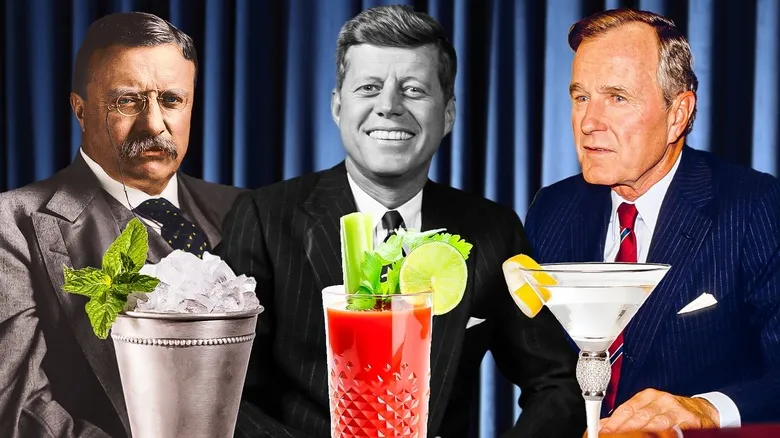George Washington: Cherry Bounce
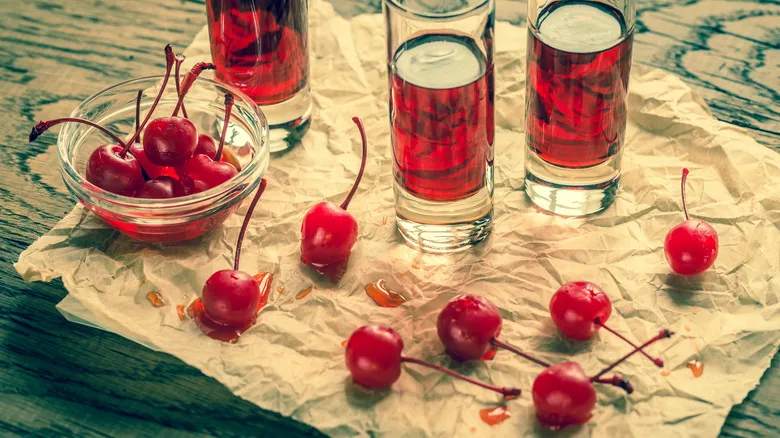
George Washington was well-known for his fondness for Madeira wine, having barrels shipped directly from the Portuguese island to his residence in Virginia and his presidential home in Philadelphia. He also enjoyed port, but did the first president of the United States ever indulge in a cocktail? According to rumors, he once overindulged in a Fish House Punch cocktail, but official records indicate that he had a particular preference for another mixed drink. His cocktail of choice was a blend of brandy and cherry cordial known as Cherry Bounce. Washington mentioned carrying a canteen of this cherished concoction during a lengthy journey through the Allegheny Mountains in 1784.
In those days, making a large batch of Cherry Bounce started with pounds of mashed sour Morello cherries. The juice was then sweetened with sugar, infused with brandy, and flavored with cloves, nutmeg, and cinnamon. After a brief simmer on the stovetop, the cordial was ladled into jars and left to mature in the cellar. After two weeks, with occasional shaking, this delightful cocktail was ready to be enjoyed.
Theodore Roosevelt: Mint Julep
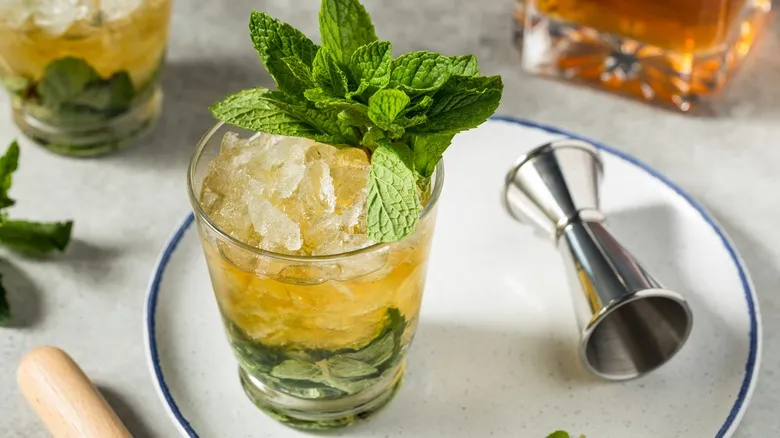
President Theodore Roosevelt was a multifaceted individual: an eloquent speaker, an avid big game hunter, and a dedicated conservationist. However, one thing he was not known for was heavy drinking. In fact, Roosevelt was so sensitive about this topic that he would consider legal action for libel if a newspaper suggested otherwise. This was exemplified in 1912 when he took legal action against the editor of the Iron Ore newspaper, which published an article asserting, "He gets drunk, too, and that not infrequently, and all his intimates know about it."
During the trial, Roosevelt testified that he only indulged in one specific type of cocktail on rare occasions and never in excess—he even confessed that he once couldn't finish that particular drink. This cocktail was a mint julep, made with mint from the White House garden. Combining rye whiskey, brandy, sugar, and plenty of fresh mint leaves, the mint julep has been cherished as a health tonic since the 1700s. Although Roosevelt might not have always finished the drink, he frequently used it as a way to persuade his fellow cabinet members to join him for a game of tennis.
John F Kennedy: Daiquiri or Bloody Mary
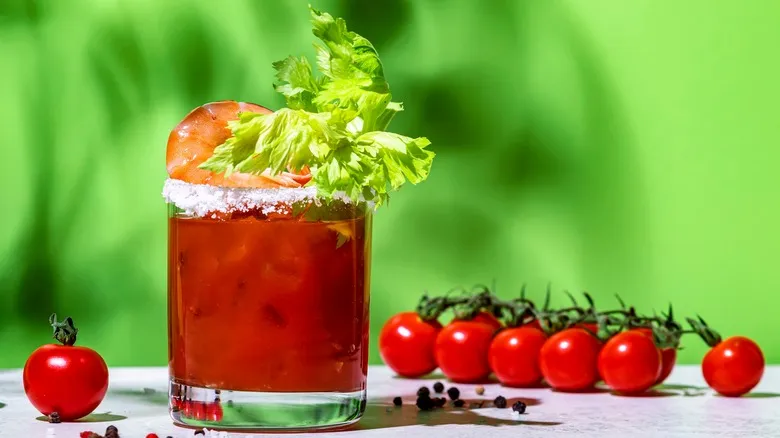
John F. Kennedy had a fondness for cocktails, and there’s some debate over whether he favored the rum-infused Daiquiri or the tomato-laden Bloody Mary more. Ultimately, it often depended on the time of day. The connection between JFK and the Daiquiri dates back to the 1940s, when the drink surged in popularity due to the abundant and affordable rum available during World War II rationing. As a World War II veteran, Kennedy likely encountered the drink during his service, but it was his wife, First Lady Jackie Kennedy, whose signature recipe truly captured his heart. While a classic Daiquiri typically includes lime juice, white rum, and simple syrup, Jackie was known to add a few drops of Falernum, a sweet liqueur with hints of lime, ginger, cloves, almonds, and nutmeg.
The Bloody Mary gained popularity in the 1950s and 1960s, particularly as Smirnoff began promoting the recipe alongside its renowned vodka. Kennedy was not immune to its allure and frequently served them at gatherings with his cabinet. Unfortunately, he had to significantly reduce his consumption of both cocktails, as they interacted poorly with the medication he took for chronic back pain.
Franklin D Roosevelt: Gin Martini
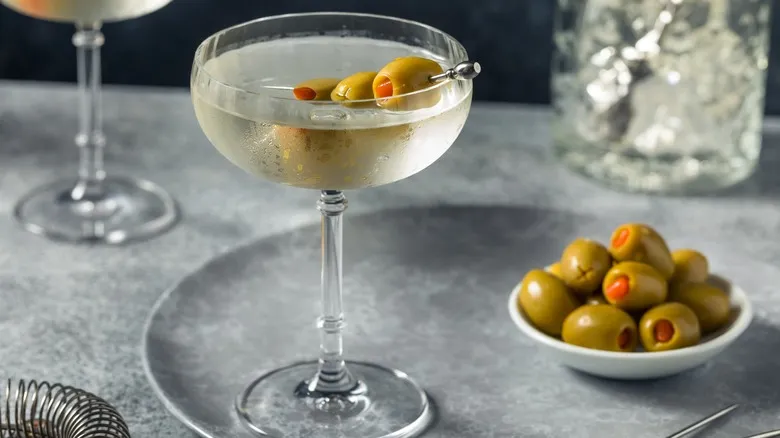
The president who played a key role in ending Prohibition certainly warranted a toast during his prime. If he were partaking in that toast, it’s likely that Franklin D. Roosevelt would have raised an ice-cold gin martini. Despite being a man of considerable wealth and privilege, he often took it upon himself to mix cocktails when cabinet members visited for "Children's Hour," his evening discussions with advisors. However, this didn’t necessarily mean his martinis were well-received by his guests.
Roosevelt was known for his unconventional approach to garnishes, often pairing briny olives with floral lemon, resulting in rather unpredictable outcomes. He even experimented with adding fruit juice, absinthe, and bitters from time to time (to be fair, the original martini did include orange bitters). He also committed one of the cardinal sins of martini-making: using an excessive amount of vermouth. His grandson has even remarked that these martinis were "truly awful." It seems Roosevelt had a penchant for the "reverse martini," which means he favored a drink with more vermouth than gin or vodka. If you wish to order a martini in this style, simply ask your bartender for a wet martini instead of a dry one.
Harry S Truman: Old Fashioned
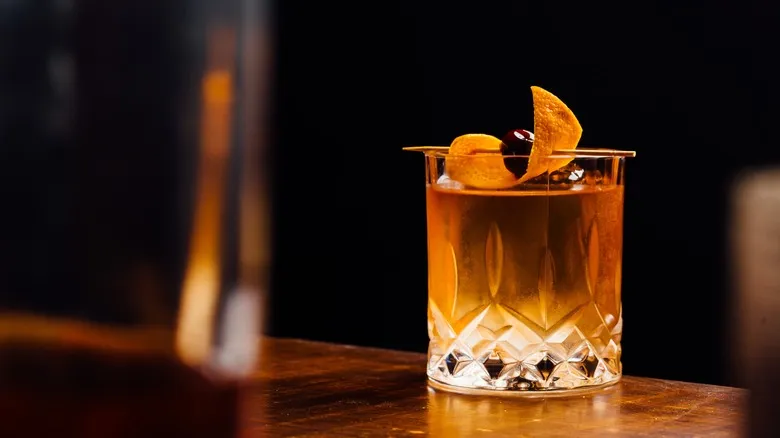
After Roosevelt's passing, Harry S. Truman assumed leadership of the nation and the presidential liquor cabinet. The questionable martinis were replaced with bourbon. It was well-known that Truman preferred to kick off his mornings with a shot of bourbon followed by orange juice, a combination he referred to as his "medicine." After a brisk morning walk, he would enjoy a proper breakfast, concluding with a glass of milk. Among the gifts he received from his cabinet were two items that reflected his fondness for whiskey: a beautiful bourbon and scotch crystal decanter set, and a case of Old Grand-Dad Whiskey, one of his preferred brands.
Truman naturally maintained his whiskey enjoyment during cocktail hour with his wife, First Lady Bess, favoring a straightforward version of the Old Fashioned cocktail. His drink lacked the orange, cherry, and other embellishments typically found in modern renditions. Both he and Bess preferred it not too sweet and, crucially, not too weak. To replicate their style, use just half a teaspoon of sugar, a teaspoon of water, and a dash of bitters—definitely skip the cherry, or First Lady Bess might accuse you of making fruit punch.
Andrew Jackson: Whiskey Punch
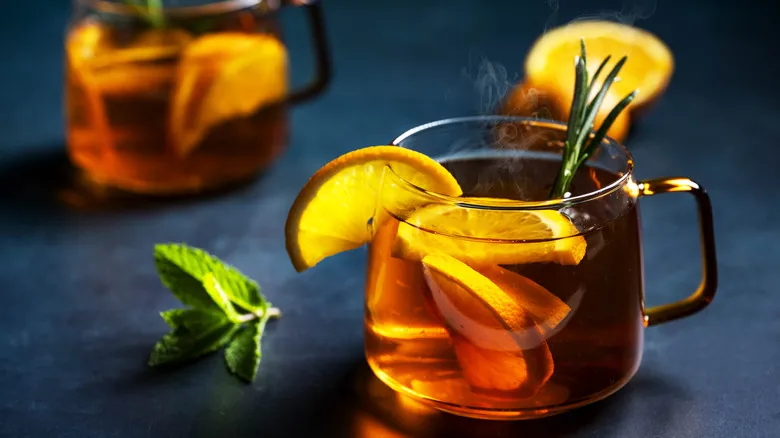
Although Andrew Jackson enjoyed whiskey neat, he is perhaps best known for a particularly strong whiskey punch associated with a notorious event during his inauguration. This incident took place against the backdrop of a bitter presidential campaign, as Jackson assumed the presidency while grappling with personal loss. His wife, Rachel, had recently passed away from a heart attack, a devastating blow made worse by the cruel rumors that had circulated about her during the election.
Eager supporters gathered at the Capitol to celebrate Jackson's hard-fought victory. In a gesture to honor the common man who had elected him, he offered cake and jugs of whiskey punch to the crowd on his inauguration day. The punch likely contained a mix of oranges, spices, and either cognac, brandy, or whiskey—many believe bourbon was the base, given Jackson's fondness for it.
The events of the inauguration are somewhat contentious. It is widely reported that some attendees became so intoxicated that they caused chaos in the White House. However, the very same whiskey punch is said to have come to the rescue, as clever staff members placed the remaining barrels on the White House lawn, successfully luring the raucous crowd away from the revered presidential residence.
Ronald Reagan: Orange Blossom
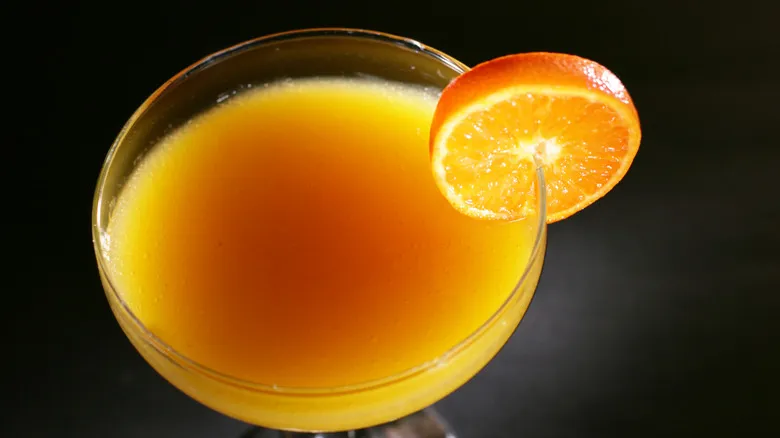
As the previous governor of California, Ronald Reagan frequently showcased some of his favorite products from his home state during his time in the White House. Notably, he was the first to introduce California's Merlot and Zinfandel wines on a national scale. First Lady Nancy's fondness for Kendall-Jackson, a well-known California wine brand, significantly boosted its sales. When it came to cocktails, Reagan highlighted a drink that featured another iconic California export: oranges.
Called the Orange Blossom, this cocktail combined vodka, vermouth, and orange juice for a refreshing taste. It rose to fame during the Prohibition era, as the sweetness of orange juice and vermouth helped to mask the harsh flavors of bootleg gin. While the traditional recipe typically uses gin, Reagan preferred the smoothness of vodka, giving his Orange Blossom a flavor reminiscent of a Screwdriver, enhanced by the herbal and sweet notes of vermouth.
Lyndon B. Johnson: Scotch and Soda

Lyndon B. Johnson occupied the Oval Office during a particularly chaotic period in American history, navigating challenges such as the Vietnam War and the Civil Rights Movement. It’s no surprise that he had a penchant for a strong drink when the opportunity arose. Although Lady Bird often attempted to limit his drinking habits, Johnson favored a classic scotch and soda, typically made with Cutty Sark Scotch and plain seltzer.
In his early tenure as Senate Majority Leader, Johnson cleverly used his preferred cocktail to his advantage. When hosting fellow politicians for cocktail hour, his staff was instructed to serve him diluted scotch and sodas, allowing him to remain more alert than his guests. After leaving office, Johnson indulged in heavier drinking, often savoring straight Cutty Sark from a styrofoam cup while riding around his Texas ranch. All he had to do was pause and extend his cup, prompting the Secret Service to rush over with a refill.
Bill Clinton: Snakebite
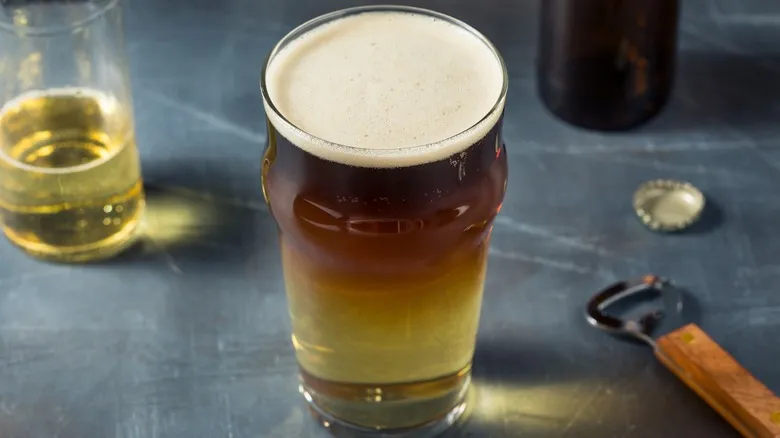
One of the most unusual cocktails enjoyed by former President Bill Clinton from Arkansas is the intriguingly named snakebite. This drink, a mix of equal parts cider and lager, was a favorite of Clinton's for unwinding. With its British roots, some bartenders enhance the drink by adding a splash of blackberry liqueur for added sweetness and potency. In the U.S., however, the lager is typically replaced with a darker stout, and the blackberry liqueur is often omitted entirely.
Interestingly, it was in England that President Clinton encountered a refusal for his preferred drink. As reported by the Harrogate Advertiser, a pub employee in Harrogate denied him the snakebite, citing its illegality in the UK. However, this claim is somewhat misleading. While it is not illegal to serve the drink (though serving half a pint of snakebite is against measurement regulations), some bartenders choose not to offer it due to its deceptively smooth nature, which can encourage excessive drinking.
Gerald Ford: Martini
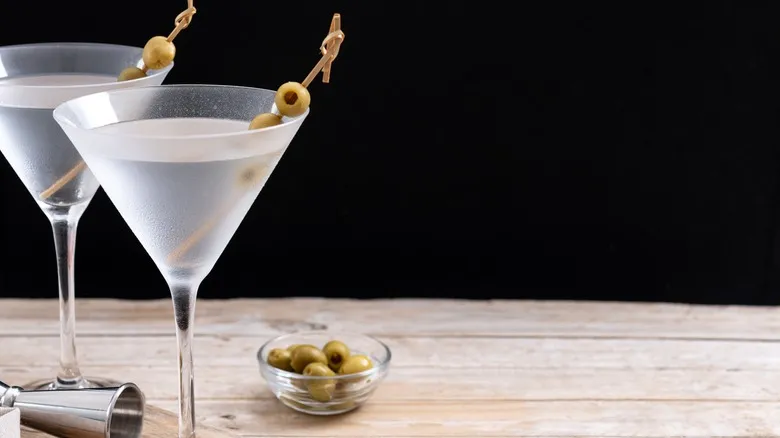
Gerald Ford's drinking habits were far more vibrant during his time as a congressman. It was widely recognized that he enjoyed indulging in a strong gin martini or two during his working lunches. While gin and tonics also made an appearance, martinis were clearly his favorite. However, once he assumed the presidency after Nixon's resignation, his staff encouraged him to significantly reduce his martini consumption, as the Watergate scandal had already shaken public confidence in the office. Although it was a challenge for him, he ultimately gave up drinking altogether after leaving office for a different reason.
First Lady Betty Ford was open about her battles with alcoholism and addiction to prescription painkillers. Following an intervention staged by her daughter, Betty founded the now-renowned Betty Ford Center, a rehabilitation facility aimed at addressing a heavily stigmatized illness. In a show of support, Ford decided to stop drinking about a year after Betty, stating that he grew weary of drinking alone. Instead, the couple enjoyed refreshing virgin cocktails made with tonic and lime.
Rutherford B. Hayes: Roman Punch
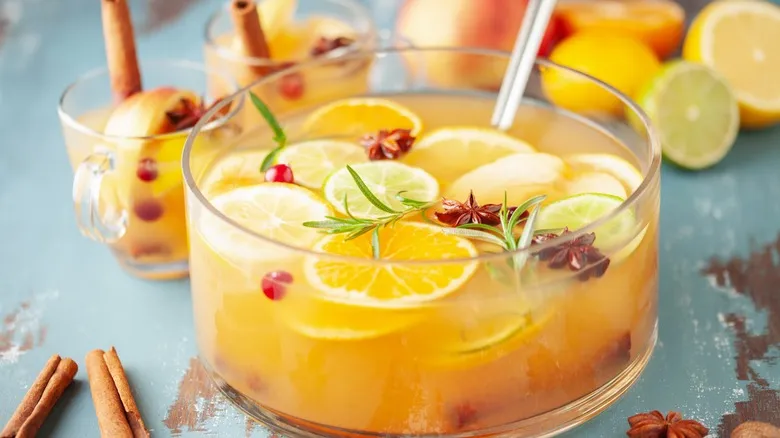
Rutherford B. Hayes had a complex relationship with alcohol during his presidency, largely influenced by his wife, First Lady Lucy Hayes, who was a strong advocate for the temperance movement. Although they initially served wine at one diplomatic gathering, the Hayes couple later decided to prohibit alcohol entirely at all subsequent White House events. It's worth mentioning that Hayes himself enjoyed a glass of wine or beer from time to time, but he honored his wife's strict rules and became known for drinking lemonade. This beverage gained popularity during the Temperance Movement, thanks in part to clever marketing by Sunkist.
The media, however, were not as accommodating of "Lemonade Lucy's" principles. This led to the emergence of a story, largely based on speculation, that forever linked the president to a drink called "Roman Punch." According to rumors, during a press event, someone from his staff allegedly spiked Lucy's sorbet punch—which consisted of lemons, oranges, water, egg whites, and sugar—with rum-soaked oranges, transforming it into Roman Punch. Hayes himself denied this claim, asserting that he had merely asked the chef to enhance the punch with spices reminiscent of rum, thereby tricking the press into believing it contained alcohol. The exact truth may never be known, but Roman Punch endures as a flavorful reminder of the incident.
George H.W. Bush: Vodka Martini
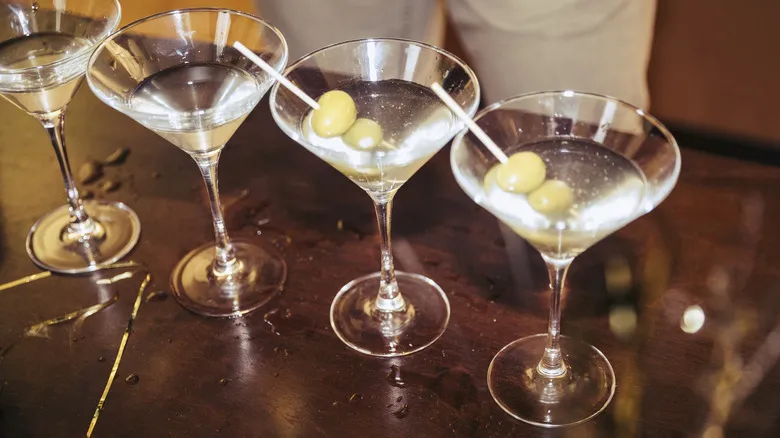
Although his son was a well-known teetotaler during his time in office after excessive drinking in college, George Bush Sr. did not refrain from alcohol while serving as president. In fact, when he wasn't sipping on the Southern soda Cheerwine, Bush found relaxation in a vodka martini at the end of a long day. He reportedly developed a taste for martinis while studying at Yale in New Haven, although he also enjoyed whiskey during his initial journey to Texas.
In 2018, Bush famously marked Memorial Day Weekend with oysters and martinis, even at the impressive age of 93. His son Jeb Bush noted that his father's later years were quite laid-back, filled with massages, watching TV, and, of course, a daily martini at six o'clock. Even during the poignant final days of his wife's life, Bush shared a last cocktail hour with Barbara, with a martini in his hand and a bourbon in hers.
Woodrow Wilson: Scotch and Soda
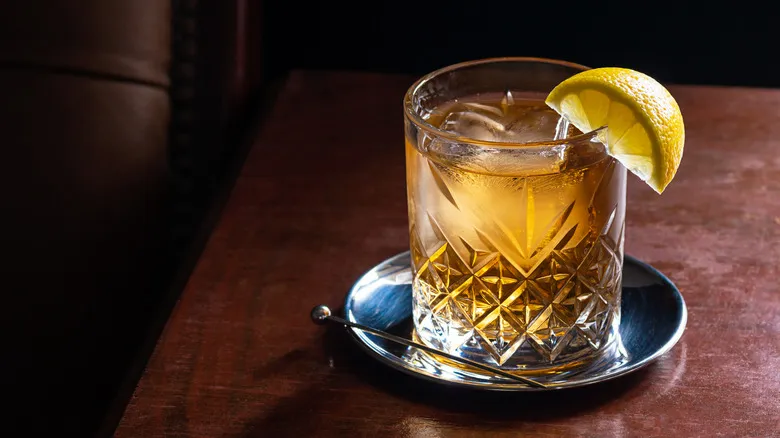
President Woodrow Wilson held office during the era of Prohibition, a reality he attempted to sidestep by vetoing the Volstead Act, though his efforts were in vain. Nevertheless, this did not prevent him from enjoying his favorite drink, Scotch and Soda. In fact, Wilson even incorporated a popular slogan for Wilson Whiskey—"Wilson—that's all!"—into his campaign efforts in the 1910s. While this was prior to Prohibition being enacted as law, it remains an ironic twist.
In a notably privileged decision, after Wilson left office in 1921, he was permitted to move his extensive collection of wines and spirits to his private residence in Washington, D.C. This transfer of alcohol was technically against the Prohibition laws, but Congress granted the president a special exemption. Today, you can still see some of those very bottles (though they are now empty) at the historic Woodrow Wilson House.
Herbert Hoover: Dry Martinis
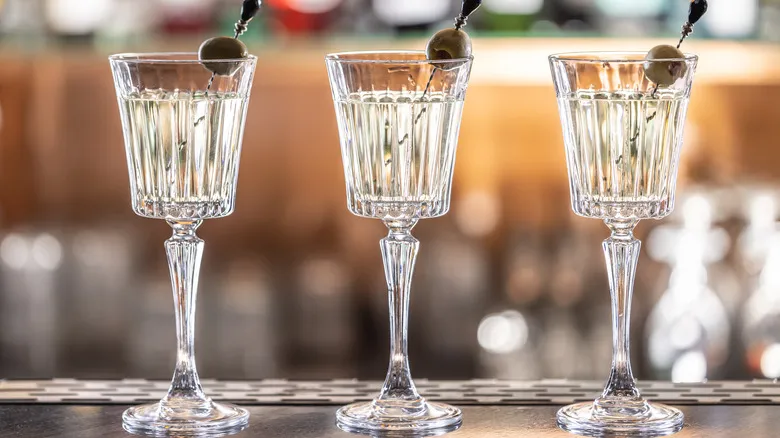
Herbert Hoover presided over a particularly challenging era, navigating the nation through both the Great Depression and Prohibition. Unfortunately, he was not very effective in resolving either issue, but he was at least not regarded as a hypocrite. Despite his fondness for martinis and his impressive wine collection, his wife, First Lady Lou, reportedly disposed of all of it when Prohibition was implemented. Hoover famously referred to Prohibition as "The Noble Experiment," suggesting he recognized it as an idealistic yet impractical law.
Once he left the White House, Hoover was free to enjoy his favorite cocktail again after Prohibition was lifted. In fact, even during a health crisis, he struggled to give up his two-martini-a-day routine. When he agreed to limit himself to just one, he requested it be served in a much larger glass. Today, Hoover's cherished martini-making set is displayed at his presidential library in Iowa. While visiting, you can also buy Herbert Hoover monogrammed martini glasses, allowing you to toast the president with his favorite drink in style.
Recommended
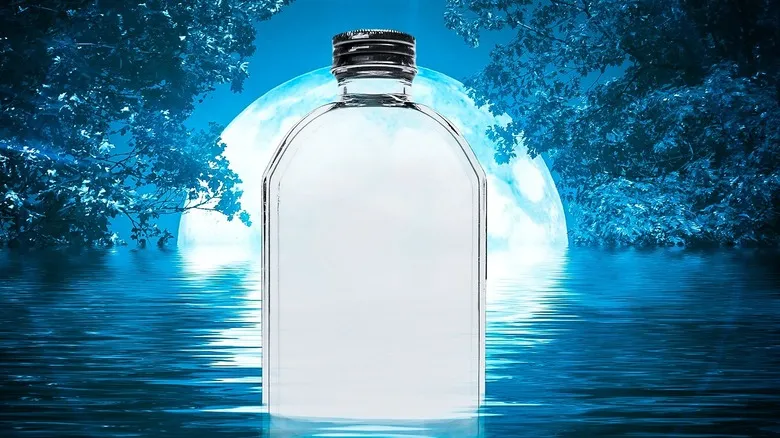
How Moonshine Got Its Whimsical Name
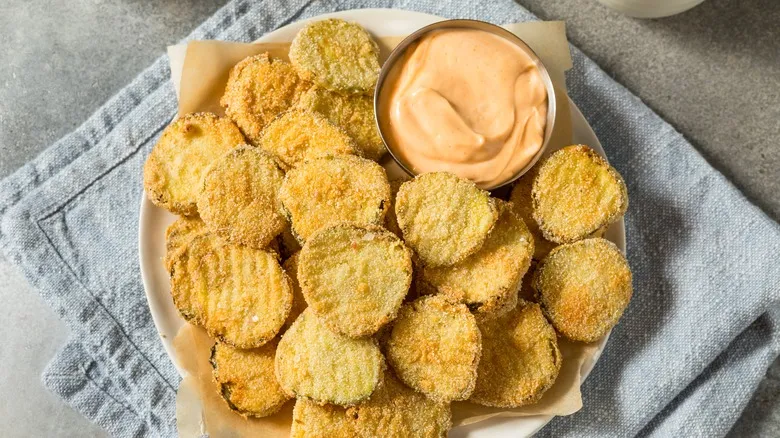
The Secret To Crispier Fried Pickles Is Waiting In Your Liquor Cabinet
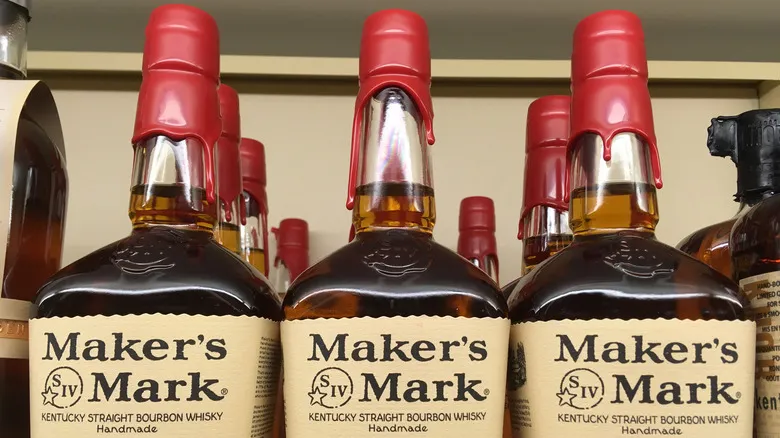
How Maker's Mark Bourbon Got Its Iconic Red Wax Drip

How The French 75 Cocktail Got Its Name From WWI
Next up

